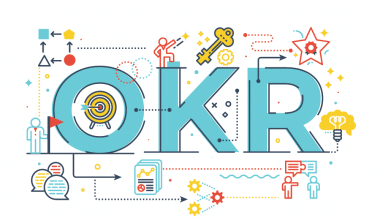A pay period is the time frame used to calculate how often workers will be paid for their labor. This may involve how long you keep records of an employee’s time on the job. Employee paycheck consistency and predictability are generally ensured by a regular schedule for a pay period. Why not read on to see what the types of pay periods are and how to calculate a pay period? We also added some interesting explanations on the monthly pay period. Why not dive in now?
What Is a Pay Period?
Every business needs a reliable pay period system as part of its HRIS infrastructure. One of the first things to do when establishing a payroll system is to determine how often employees will be paid. The frequency of paying your employees is actually determined by a pay period. Setting up a regular pay cycle is essential for the successful operation of any firm. It helps streamline your business’s finances by ensuring that your employees are paid on time for their efforts. Choosing the payment schedule is not always a straightforward process. Depending on whether an employee is salaried or hourly, part-time or not, works flexible hours, etc., you can set up a variety of pay periods.
Types of Pay Periods
There are different types of pay periods you can opt for, however, based on the one that is convenient for you. The following are the types of pay periods:
#1. Daily
Paychecks are distributed daily to workers. Because of this, there can be no more than 365 pay periods in a year.
#2. Weekly
Employees that are paid on a weekly basis do so at the end of each week. Employees will receive weekly payments on Fridays for the hours they worked over the previous week. There are several positive outcomes that can result from switching to a weekly pay period. The first benefit is that workers’ paychecks are distributed more regularly, which can improve their financial planning and cash flow. The second benefit is that it can help you pay staff on time, which is highly valued by both current workers and potential new hires. On the other hand, weekly payroll processing can be more expensive and time-consuming for businesses. Paychecks are distributed weekly to employees. This equates to roughly 52 pay periods per year.
#3. Biweekly
Every other week is considered a biweekly pay period. This means that workers get paid every two weeks for the time they put in during the previous pay period. Biweekly payments have the same appeal as weekly ones in that they provide workers with access to their money more frequently. And there’s more time to inspect timesheets than there would be during the weekly payroll cycle. However, compared to monthly payments, biweekly payroll processing can be more expensive and time-consuming for companies. Some workers might even prefer a longer pay period if it means they can get paid more frequently. Paychecks are distributed biweekly to employees. This may also result in about 26 pay periods each year.
#4. Monthly
A monthly pay period denotes that employees are paid once per month, or 12 times per year. Most European countries have monthly pay cycles for their salaried workers. Employees who are paid on a monthly basis typically receive their funds on the final Friday or the last day of the month. Companies that provide commercial and professional services benefit from a monthly billing cycle. However, monthly invoicing is favored by many independent professionals.
Those who receive their pay once each month do the math by dividing their annual wage by the number of months they are paid. Staff members receive compensation once each calendar month. This can result in 12 pay periods per year.
#5. Semimonthly
Employees on a semimonthly schedule are paid twice monthly, on the 15th and last day of each calendar month. The most significant benefit of this payment schedule is its moderation between more and less frequent payment intervals. However, this arrangement can be more difficult to track than regular weekly or biweekly paychecks. This is because it necessitates monitoring pay and hours worked for individual pay periods throughout the month. The number of working days in each pay period may also cause payment discrepancies. Employees may become perplexed and irritated as a result.
Paychecks are distributed to workers twice every calendar month. That means it’s possible to have 24 paychecks per year.
#6. Quarterly
When employees are paid once every three months, this is called a quarterly pay period. The benefits include lower administrative costs and less work for HR departments. Employees may have difficulty making ends meet, and there may be budgeting and planning challenges. Due to its complexity, this method of paying employees is typically only utilized by very small enterprises with a few employees or by seasonal businesses.
Paychecks are distributed quarterly in accordance with the calendar. As a result, four paychecks may be issued each year.
How to Choose a Type of Pay Period
The following are ways to choose a type of pay period:
#1. Consider Gross Pay
The gross pay is the total amount of money earned before taxes and other deductions are taken out. Federal taxes and other deductions, such as those for insurance and retirement, may be taken. Knowing your gross salary can help you choose the most convenient pay period, as deduction amounts vary based on how often you are paid.
#2. Consider Leap Years
A leap year occurs when an extra day is added to the calendar year so that it aligns with the Earth’s rotation. This means that every four years, regardless of whether you choose a weekly or biweekly schedule, you may receive an extra pay period. If you decide to pay your employees on a salary basis, you may need to make some changes to ensure that they are not overpaid.
#3. Choose a Payroll Service
There are a number of payroll systems available to help streamline and computerize your pay period. It’s possible that these web-based platforms offer various add-ons. When selecting how often to pay workers, you might take these considerations into account.
#4. Learn Employment Laws
When deciding which pay period to use, you should take federal and state legislation into account. Some states have statutes with requirements that vary by business sector, IRS involvement, and employee safeguards. If you want more information on how the laws in your state can affect your paycheck, you can contact the relevant agency there.
#5. Consider the Salary Type
When deciding on a payment schedule, you can pick from several different compensation formats. Pay structures can vary from hourly to salary to commission. Salary workers may prefer regular pay dates, whereas hourly and commission workers may prefer more frequent pay periods.
#6. Consider Overtime
It’s important to think about how to keep track of and compute extra pay if your employees are qualified for overtime. Overtime pay rates and when they can be included in a paycheck may be subject to local, state, or federal labor laws. In order to learn more about overtime pay, you can contact human resources.
#7. Consider the Employees’ Needs
Choosing to pay employees more frequently can boost morale, but it may lead to higher payroll expenses. It is possible that an employee’s choice of pay frequency is mandated by their particular state’s labor law. Taking these into account can help you settle on a pay period that suits your needs without breaking the bank.
#8. Consider the Business Industry
Choosing a pay period frequency for a company is not without its challenges. Think about if there are any peak times that could affect your cash flow. Your salary structure can also be influenced by market norms.
#9. Consider Accounting Implications
The amount of time and effort HR requires for payroll processing can rise or fall depending on how often your company processes payroll. Accounting may be less of a necessity when pay periods are fixed, as more accurate date tracking is unnecessary.
#10. Consider the Benefits
You can provide employees with a wide range of perks, including as health insurance, disability compensation, and retirement savings plans. These can be subtracted from or added to the total salary to arrive at a final figure. By translating these into payments, you may zero in on a pay period that offers a good compensation-to-costs ratio.
#11. Consider the FLSA
Minimum wage, overtime, and time limits are just some of the protections guaranteed by the Fair Labor Standards Act (FLSA), a federal statute in the United States. Additional legislation governing the validity of employment contracts may also be included. Finding the right pay period for your company requires knowledge of the Fair Labor Standards Act.
#12. Look for an Accountant
Hiring an accountant can also provide helpful background and data that can affect how often you get paid. They can aid in the generation, distribution, and upkeep of all payroll-related records, including those pertaining to wages, bonuses, and other employee perks. They can check for accuracy and make sure everything is in line with state and federal regulations.
How Do You Calculate a Pay Period?
Thinking of how to calculate a pay period? Even though there are many different kinds of pay periods, all schedules use the same fundamental method to calculate a pay period:
- Find out when the pay period will begin and end.
- Determine the total working days and hours for the pay period.
- The employee’s gross compensation for the pay period is determined by multiplying the number of days worked by the daily rate or the number of hours worked by the hourly wage.
- Deduct from gross income any payments that were made before taxes were withheld, such as health insurance or retirement savings contributions.
- Determine the employee’s after-tax income after all required withholdings have been made for federal, state, and local governments.
Payroll and time-tracking apps can also be used to streamline pay period calculations.
Choosing the Best Pay Period for Businesses
The most frequent duration of the pay period in the United States is bi-weekly, chosen by 42% of private employers. Industries have a preference for different pay cycles as well; for example, weekly pay cycles are common in the construction industry, whereas semi-monthly cycles are more common in the financial and IT sectors. According to BLS statistics, the smallest businesses have the widest range of wages for their employees.
Compliance and cash flow should be major considerations when deciding on a pay period for your company. Before deciding on a pay period (or periods), you should consider whether you have exempt (salaried) or non-exempt (hourly) personnel, as well as any special requirements imposed by state law. Keep in mind that paying hourly employees on a monthly or semi-monthly basis is prohibited by law in several states. To effectively identify how to meet payroll obligations, a company must also pay close attention to its cash flow cycles. If a company has to process payroll more than once a month, it could strain their finances and make it harder for them to satisfy their responsibilities.
The Benefits and Drawbacks of the Pay Period
The followings are the benefits and drawbacks of each type of pay period:
#1. Weekly Pay Period
Benefits
- Employees are paid more often, so they have a constant flow of liquid assets.
- Management and HR can sort out any payroll issues very quickly and during business hours.
- Payment is more flexible, so any issues are resolved quicker.
Drawbacks
- Most time-consuming pay period method in terms of administration.
- Least efficient in terms of tax and accruals for employees.
- More frequent payroll results in greater expenses for the organization.
#2. Bi-Weekly Pay Period
Benefits
- Employees are paid often.
- Management and HR can sort out any payroll issues very quickly and during business hours.
- More time/cost efficient for the organization compared to weekly pay.
Drawbacks
- HR administrators have to pay attention to pay dates, so they can accurately process them on the payroll schedule.
- Pay periods can be slightly difficult if the period overlaps over the end of a month or year, thus requiring additional calculation.
- Leap years can cause processing difficulties.
- If a paycheck extends over the end of the year (a potential 27 paycheck), this causes difficulties with regard to annual pay expectations, employer contributions, benefits, and taxes.
#3. Semi-Monthly Pay Period
Benefits
- Employees are paid relatively frequently.
- Employee paychecks are always paid within a month, which removes the complex intricacies involved with a bi-weekly pay period.
- Payroll dates are known by employees and employers.
- The payroll schedule becomes more streamlined, reducing the associated expenses with more frequent payroll methods.
Drawbacks
- Calculating overtime can be difficult.
- Dates may need adjusting due to national or bank holidays.
- Paydays are not always the same day of the week which can cause confusion.
- Work weeks and pay cycles may not align.
#4. Monthly Pay Period
Benefits
- Well structured.
- Easiest for employers to manage their finances and for longer-term planning.
- More efficient with regard to time and money for the organization.
- Best for free-lance and salaried employees who invoice monthly
- Simplifies accrual and tax expenses for administration.
Drawbacks
- This can cause scheduling difficulties as the pay period will end on a different day of the week each month. Thus, the employer will have to decide when employees will be paid.
- Can cause difficulties for employee budgeting.
- Relatively poor for hourly workers.
Manage Pay Periods and Payroll with Payroll Software
Payroll administration is extremely intricate and critical to get right. Never trust a spreadsheet with stuff like this. Payroll software allows for flexible configuration of pay periods and accounting for several employee classifications. It streamlines the process of determining compensation, benefits, taxes, and time off. It can also handle direct deposit payments, which are faster and safer than paper checks for employees.
Human capital management (HCM) refers to the methods by which a company acquires, develops, and keeps its staff. Increased productivity, lower turnover, and happier workers are all outcomes of well-managed HCM strategies. Payroll processing is a common feature of HCM software, as is the management of salaries and other forms of compensation. Human capital management is only one of several essential business programs out there.
Payroll software also allows you to monitor key performance indicators like payroll error rates and processing times so that you can better manage your team’s efforts and make informed decisions about where to make improvements. These KPIs are visualized in user-friendly dashboards that can be shared with your team and other important stakeholders in the company.
It may seem like a little decision, but the pay period or periods you choose for your firm will have far-reaching effects on both the company and its employees. The choice paves the way for the company to meet one of its primary responsibilities, namely, paying its employees. Payroll processing can be difficult due to the need to manage many pay periods, account for multiple pay structures, and ensure legal compliance. You can streamline the process with the help of HCM software, which also integrates with other parts of the business and provides crucial key performance indicators to track the success of your team, and assists employees in managing documentation relating to human resources.
What Is the Difference between a Pay Period and a Payday?
A pay period is a report that specifies the amount an employee will get on their paycheck for a specific pay period. This can contain things like hours worked, benefits received, and taxes paid. Payday is the date on which an employee is paid, and it may be up to two weeks before the end of the pay period.
How Long Is a Paid Period?
The majority of American workers are paid on a biweekly basis, as reported by the BLS. As a result, the standard length of a pay period is two weeks or 10 business days. Weekly, biweekly, and monthly pay intervals are also viable options.
Is the Pay Period the Same as the Paycheck?
No, it is not. A pay period is the time frame used to decide when employees will be paid and how much they will be paid. Periods between paychecks tend to be regular and can be weekly, biweekly, semimonthly, or monthly. Remember that the pay period is not the same as a workweek.
Final Thoughts
The best choice of pay period is the one that is most convenient for you. How many of your company’s payroll periods fall into each category? Do you have an effective method for handling pay periods in place? Seek the opinion of an accountant, either externally or internally, to see what they recommend.
Related Articles
- What is Biweekly Pay? Comparisons, Calculations, Pros & Cons
- Biweekly Pay: How to Calculate your Biweekly Pay
- HOW TO CALCULATE MONTHLY INCOME: 2023 Best Easy Guide
- HOW TO DO PAYROLL: Step-By-Step Guide
- HOW DOES SALARY PAY WORK: How Salaried Workers are Compensated






